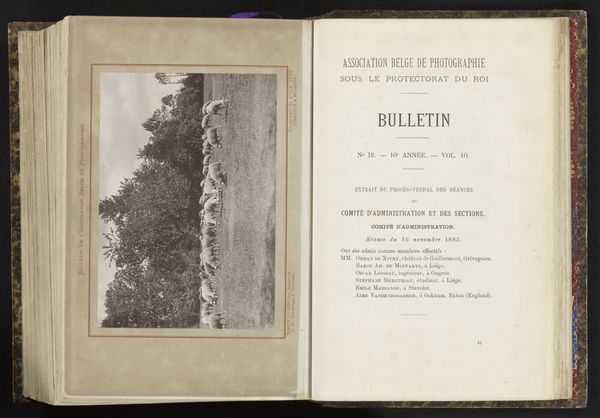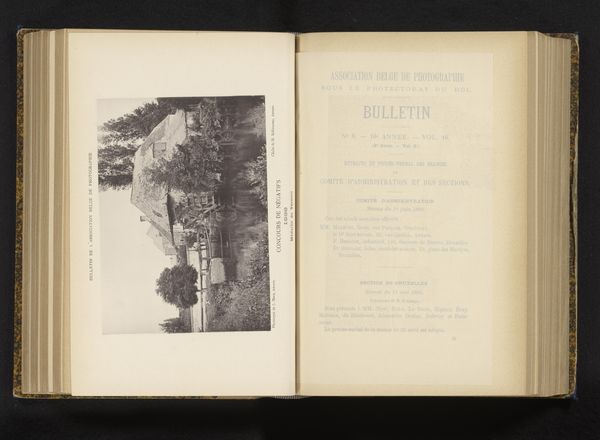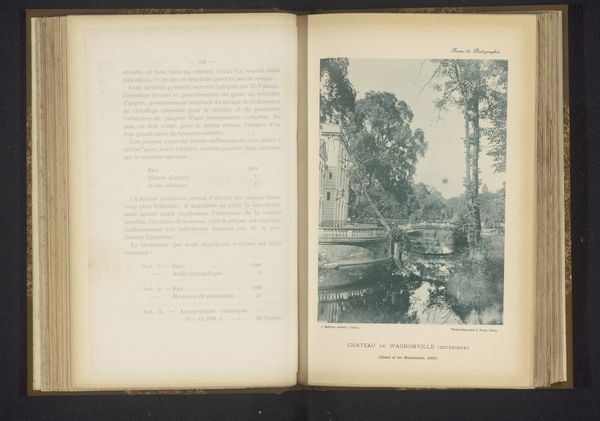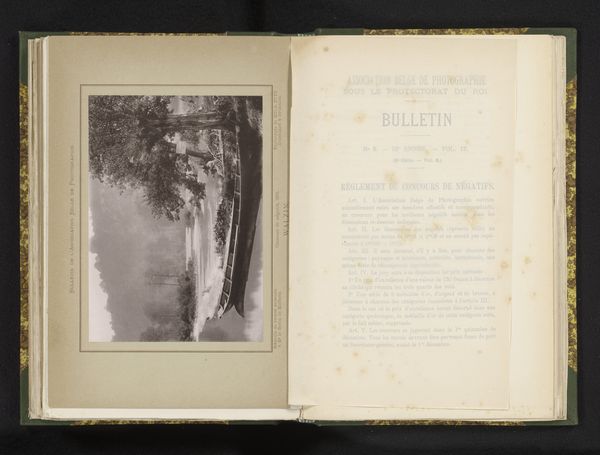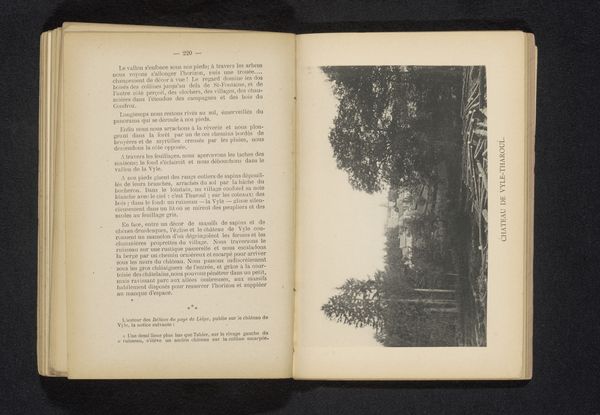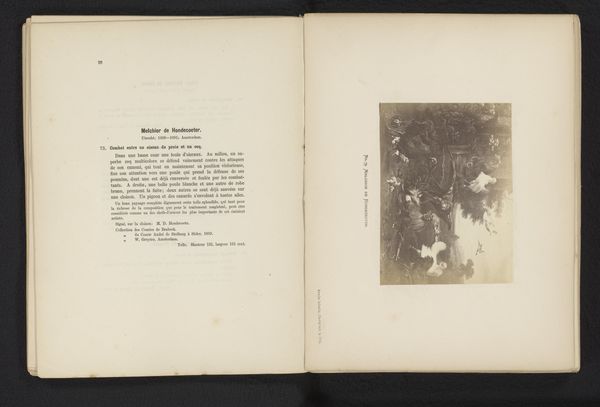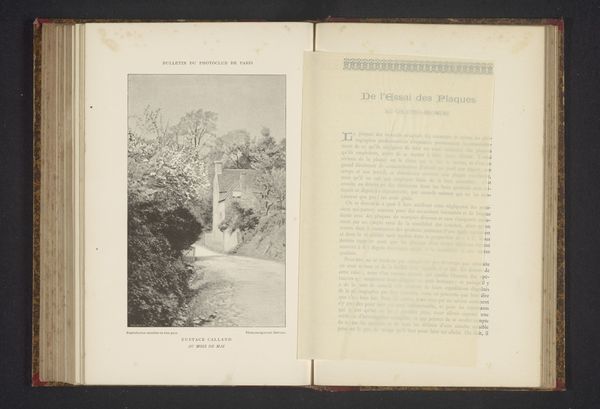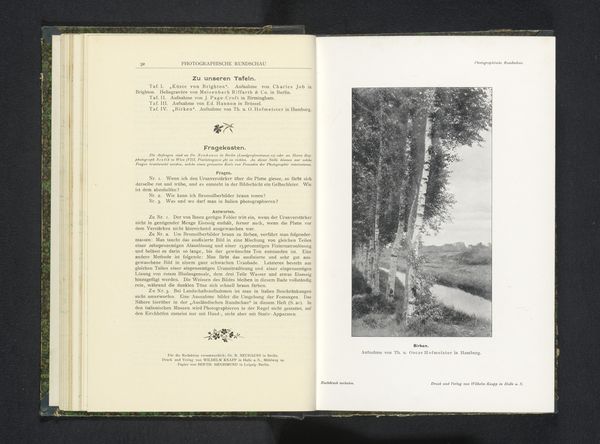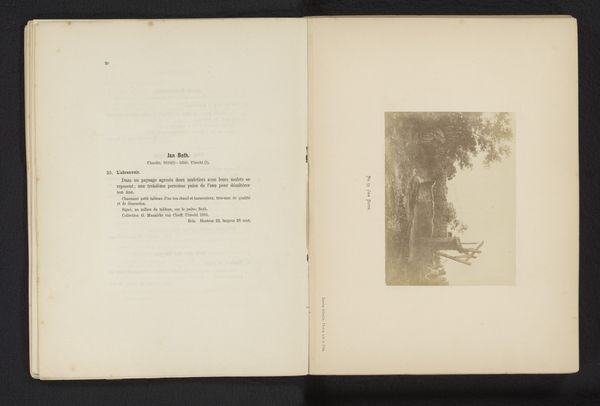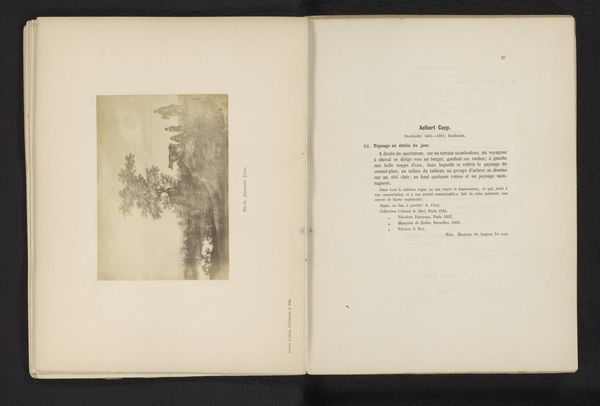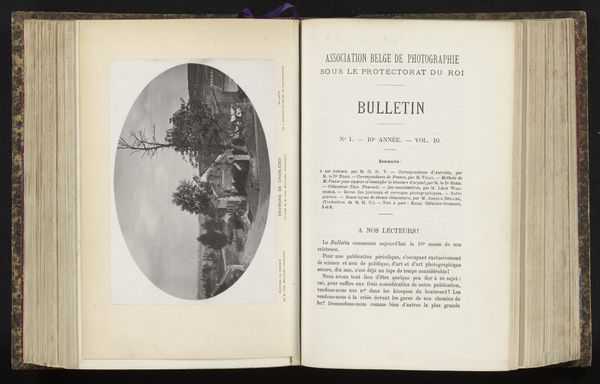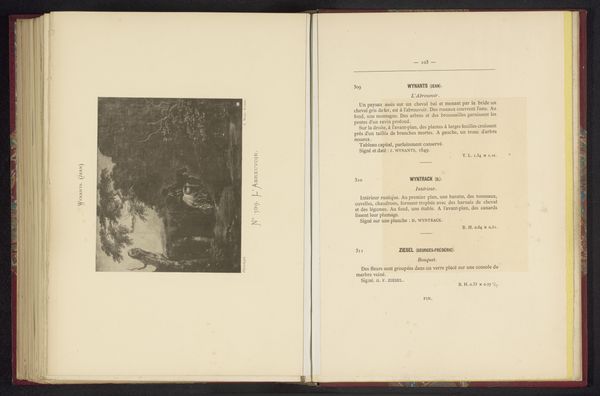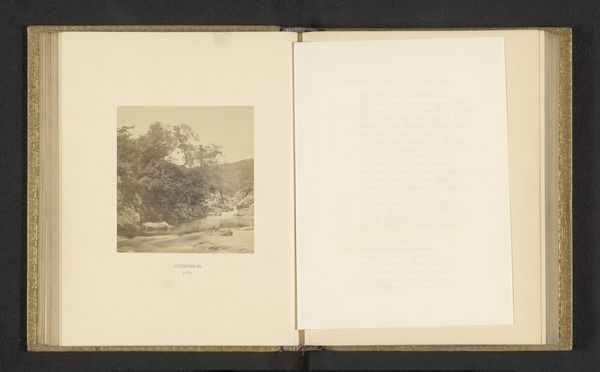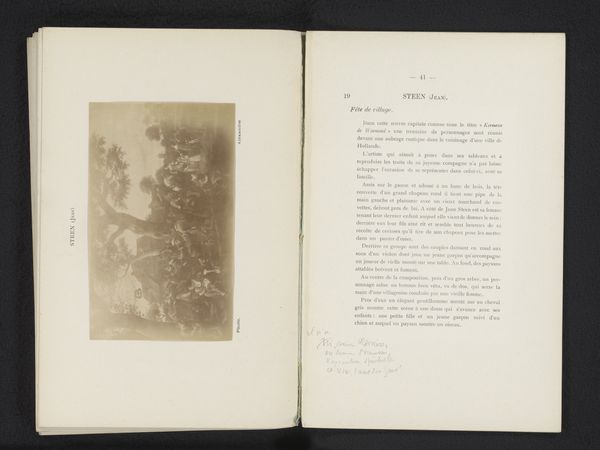
print, photography
#
aged paper
#
pictorialism
# print
#
neo-impressionism
#
landscape
#
photography
Dimensions: height 120 mm, width 166 mm
Copyright: Rijks Museum: Open Domain
Curator: Here we have a photograph entitled "Landschap met waterpartij," or "Landscape with Water Features," attributed to Georges Wilmotte and dated to before 1889. It’s presented as a print in a publication, indicative of the period's pictorialist leanings and potentially its exploration of neo-impressionist techniques through the relatively new medium of photography. Editor: It strikes me as both melancholic and serene. The grayscale tones evoke a sense of nostalgia, and the composition, with its heavy emphasis on vertical lines and reflections, has a stillness to it, doesn't it? Curator: Precisely. The stark contrast in tones highlights the textural qualities, and indeed, it does recall many late 19th-century paintings, a hallmark of pictorialism aiming to elevate photography to the level of fine art. Wilmotte's manipulation of light creates a deliberate focus on form, more than detail. Note how the texture supersedes distinct, identifiable landscape. Editor: That reminds me that water, historically and symbolically, often represents fluidity, change, or even the subconscious. Paired with the surrounding forest, we have images of nature with a symbolic implication. One can see here that the landscape represents a specific cultural perception—a symbolic mirror reflecting emotional depth and potential transition in life's path. Curator: I would suggest that those inherent qualities can exist apart from cultural interpretations of nature, although such interpretation could add something to the piece. We can clearly see the arrangement of the objects create implied form, with the photographer not only observing his world, but crafting it, thereby commenting on the structures and relationships of space. The piece becomes much more engaging beyond the limitations of simple portraiture, even as the portrait may echo nature. Editor: Very true. And while the sharp distinctions do add value, I am taken back to how we can look to nature, whether interpreted in ways symbolic or physical, for an appreciation for the human existence within it. Curator: Well articulated. Its delicate balance of light and shadow does invite contemplation. Editor: Yes, a glimpse into the landscape of both nature and memory.
Comments
No comments
Be the first to comment and join the conversation on the ultimate creative platform.
